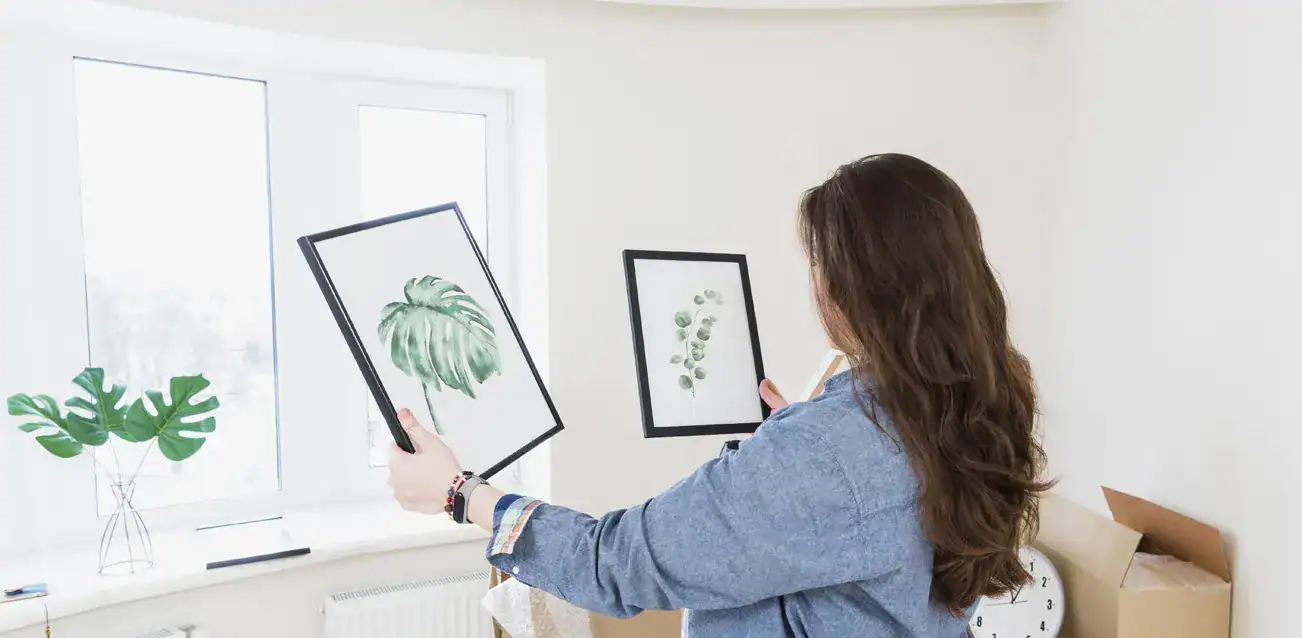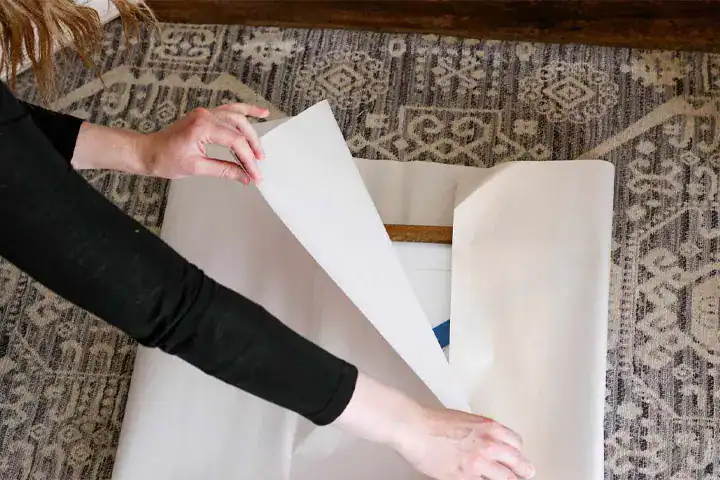SEO Title:

Proper Packling Ensures Safety for Your Artwork
Moving artwork can be a daunting task, whether you’re relocating a priceless family portrait or a favorite piece of contemporary art. Proper packing ensures that your pictures, canvas paintings, and framed artwork arrive at your new home in perfect condition. Packing pictures and artwork properly is just one part of the overall moving process. To better understand how long the entire relocation might take, check out our guide on how long it takes to move into a house.
.
As experienced moving company in Idaho Falls that moved a lot of artwork, we decided to share useful tips for you. This guide will walk you through the essential steps and expert tips for how to pack pictures for moving, including how to pack canvas paintings, framed art, oil paintings, and fine art. With the right materials and techniques, you can protect your artwork and make your move stress-free.
Essential Packing Materials
Before you begin, gather the following supplies:
- Bubble Wrap: Provides cushioning for fragile items.
- Glassine Paper: Protects artwork from moisture and dirt.
- Packing Tape: Secures wrapping materials.
- Cardboard Sheets: Offers additional protection for frames.
- Picture Boxes: Specialized boxes designed for artwork.
- Corner Protectors: Safeguard frame corners during transit.
Step-by-Step Guide to Packing Pictures
Let’s start with the actual process now!
1. Prepare the Artwork
- Remove Hanging Hardware: Take off any nails, hooks, or wires to prevent damage.
- Clean the Surface: Gently dust the artwork with a microfiber cloth to remove dirt.
- Protect the Surface: For framed art, place a piece of glassine paper over the front to shield it from scratches.
2. Wrap the Artwork
For Framed Art:
- Lay the artwork face down on a clean surface.
- Cover the front with glassine paper.
- Wrap the entire piece in bubble wrap, ensuring the bubbles face outward.
- Secure the wrap with packing tape.
For Canvas Paintings:
- Place the canvas face down on a clean surface.
- Cover the front with glassine paper.
- Wrap the canvas in bubble wrap, avoiding direct contact with the paint.
- Secure the wrap with packing tape.
3. Add Protective Layers
- Cardboard Sheets: Place a piece of cardboard over the front and back of the wrapped artwork to prevent pressure damage.
- Corner Protectors: Apply foam corner protectors to safeguard the frame corners.
4. Box the Artwork
- Choose the Right Box: Select a box that is slightly larger than the wrapped artwork to allow for padding.
- Cushion the Bottom: Fill the bottom of the box with packing peanuts or crumpled paper.
- Place the Artwork: Gently slide the wrapped artwork into the box.
- Fill Gaps: Add more packing material around the artwork to prevent movement.
- Seal the Box: Tape the box securely and label it as “Fragile” and “This Side Up.”
Tips for Packing Specific Types of Artwork
Each type of artwork is specific – so we prepared some unique tips for each type.
Packing Oil Paintings
- Avoid Plastic Wrap: Do not use plastic wrap directly on oil paintings, as it can trap moisture and damage the paint.
- Use Breathable Materials: Wrap the painting in acid-free tissue paper or foam to protect the surface.
- Climate Control: Ensure the painting is transported in a climate-controlled environment to prevent damage from temperature and humidity changes.
Packing Framed Art
- Mark the Glass: Place an “X” with masking tape across the glass to prevent shattering.
- Use Corner Protectors: Apply foam corner protectors to shield the frame corners.
- Wrap Securely: Wrap the entire piece in bubble wrap, ensuring the bubbles face outward.
Packing Canvas Paintings
- Avoid Direct Contact: Do not wrap the canvas directly with bubble wrap, as it can leave impressions.
- Use Protective Paper: Wrap the canvas in acid-free tissue paper or foam to protect the surface.
- Support the Canvas: Place the wrapped canvas between two pieces of cardboard to prevent bending.
Transporting Artwork
- Upright Position: Transport artwork in an upright position to prevent pressure on the surface.
- Secure Placement: Ensure the artwork is secured and does not move during transit.
- Climate Control: If possible, use a climate-controlled vehicle to protect the artwork from temperature and humidity changes.
Unpacking Artwork
- Handle with Care: When unpacking, handle the artwork carefully to avoid damage.
- Remove Wrapping: Remove the wrapping materials and inspect the artwork for any damage.
- Rehang or Store Properly: Rehang the artwork in its new location or store it properly until ready to display.
Conclusion
Packing pictures and artwork for moving doesn’t have to be overwhelming if you follow the right steps and use the proper materials. Whether you’re transporting canvas paintings, framed art, or delicate oil paintings, ensuring their safety during transit is essential to preserving their value and beauty. By using bubble wrap, corner protectors, and custom boxes, your artwork will be safe and secure. Remember, take the time to pack properly, and your treasured art will arrive in your new home just as beautiful as it was before.
FAQs
How do I pack pictures for moving?
To pack pictures for moving, wrap each piece in bubble wrap, add corner protectors, place them in a sturdy box with padding, and label the box as fragile. Make sure to keep the artwork upright during transport.
What’s the best way to pack canvas paintings for moving?
Wrap canvas paintings in acid-free tissue paper, then use bubble wrap to protect the surface. Place the wrapped canvas between two pieces of cardboard to prevent bending, and secure it in a box with additional padding.
How should I pack framed art for moving?
For framed art, cover the front with glassine paper to protect the surface, wrap the piece in bubble wrap, and use foam corner protectors. Finally, place the artwork in a picture box with plenty of cushioning.
How do I pack oil paintings for moving?
Oil paintings should be wrapped in acid-free tissue paper or foam to protect the paint. Avoid using plastic wrap, as it can trap moisture. Transport the artwork in a climate-controlled environment to prevent damage from temperature or humidity changes.
How can I transport paintings safely?
Transport paintings upright to prevent pressure on the surface. Use a well-cushioned box to protect them from shocks during transit. If possible, opt for a climate-controlled vehicle to maintain a stable environment for your artwork.

